I recently came across a question in a LinkedIn group I follow. Someone was asking “What are the best marketing automation software for a small non-profit business?”. There were plenty of replies. Everyone appeared to have their favorite marketing automation software, that they apparently use for everything.
I found this quite strange and I am sure the person asking the question found it quite overwhelming. I only saw only one person actually ask about what the person actually wanted the marketing automation tool to help them with.
This is certainly the first question I would ask.
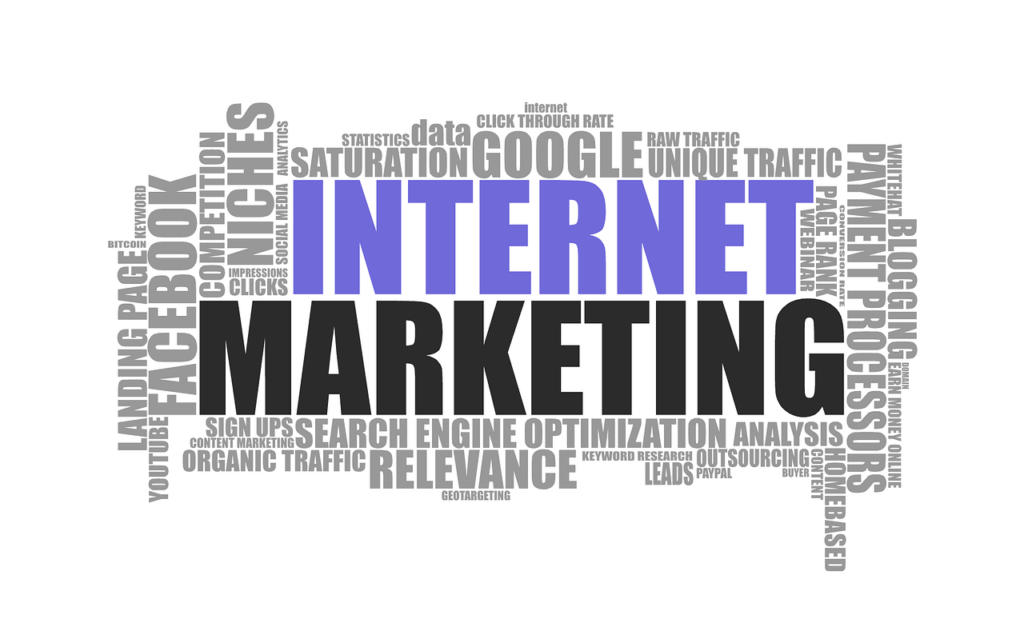
This question also inspired me to write this article. It is a blog article so it doesn’t offer me the opportunity to ask questions. However, it does present my viewpoint on what marketing automation tools a small business needs to consider.
I also try to explain how you would use these tools together as part of a marketing or sales funnel to generate qualified leads and customers.
Quick disclaimer – this review does contain affiliate links to products that I recommend. I only recommend products that I have used and that I think could be beneficial to your business. I receive a small commission if you click on any of the links and sign up for the product or service, but that doesn’t increase the price and may sometimes include special discounts.
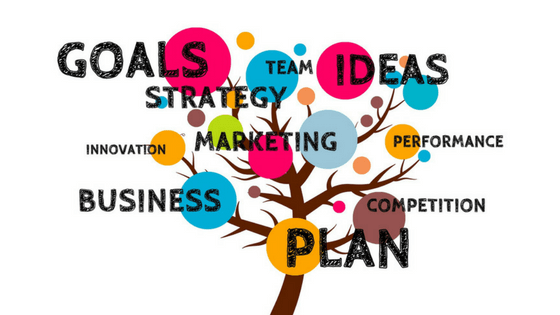
What Do You Need From Your Marketing Automation Tools?
I have considerable experience with marketing small businesses. It is very easy to pick a marketing automation tool that is powerful and full of features, but also too complex for a small business to implement and manage.
It is also important to understand that “marketing automation” covers a whole set of functions and tasks.
So let’s try to break it down. Why are you looking at marketing automation tools for your business? Here are some common reasons:
- To save time and automate some of the processes.
- To integrate some of your existing processes better.
- To allow you to do a better job of converting your website traffic to leads and customers.
- To better manage your email list.
- To segment your email list so that they receive more relevant information
- To build marketing and sales funnels. (I explain how this works later in the article)
Fundamentally you want to generate more leads for your sales team or more sales for your online product.
It is important to fully understand your reasons for investing in marketing automation tools before you go spending your budget on something that doesn’t provide that desired functionality.
What Resources Do You Have Available?
When I say resources, I am looking at three things:
- How much time do you or your team have to devote to customizing and managing marketing automation tools?
- How much money do you have to invest in the marketing automation tools and implementing them correctly?
- Do you already have things like: webinars, blog articles, emails or videos that you can use?
These are also important questions. For example, you don’t want to invest in a Webinar hosting tool if you don’t have anyone in your business who can deliver webinars.
Likewise, there is no point in investing in a sophisticated marketing automation platform, if you can’t afford to pay someone to implement it correctly or you don’t have anyone on your team with the bandwidth to manage it.
Common Types of Marketing Automation Tool
To give you some direction, here are some examples of the types of marketing automation tool I use in my business.
Email Automation Tool
If you have an email list of prospects and existing customers, you may want to send out regular emails to that list with information or offers that may interest those people.
You main also want to segment that list into different categories and interest groups so the emails are more likely to be of value to the person receiving them.
If this is a priority for you, an email automation tool like Drip could be helpful. Drip allows you to upload an existing contact list and send email campaigns to people on that list. The emails can be sent out at specific times and at specific intervals. Your emails can form a sequence that tells a story or builds up to a product launch.
Drip can also integrate with your website or landing page tool to collect new subscribers and segment them according to the page content they viewed and the form they completed. More on this later, when we talk about sales and marketing funnels.
You can get a free Drip account for up to 100 email addresses by clicking here
If you want to learn more, please visit my Drip Resource Page.
CRM (customer relationship management)
CRM is more of a sales automation tool than a marketing automation tool. Even so, it does have a key role in helping you manage prospects and in new business development.
If you correspond using more than just email, you will find a CRM tool very useful. This is especially important if you have a team of salespeople or telemarketers, who need to organize their customers and prospects into categories and record their interaction with them. They may also need to set up follow up calls and meetings or manage a sales pipeline.
There are many choices for this. Hubspot offers a free CRM platform with paid upgrades to unlock more features. Others are Zoho CRM, SugarCRM. When choosing a CRM platform, take a good look at the list of integrations.
Note: You want to avoid investing in a tool that doesn’t integrate with other marketing automation tools that you may want to use to perform other functions.
Always check the list of “integrations” for each product and try to choose tools that work together without major customization.
Landing Page Software
Landing page software is used to create a special type of web page, called a landing page.
Traditionally, a business would use a website as its main online presence. They would try to bring traffic to that site through SEO and Google ads.
The downside of this approach is that the web pages aren’t always optimized for the people who would click those ad links. The pages may not have a way to get people to subscribe either.
Instead, it was hoped that they would find the content so compelling and relevant, that they would be compelled to pick up the phone and call a salesperson – not very likely. I know, because this is what my company did for many years.
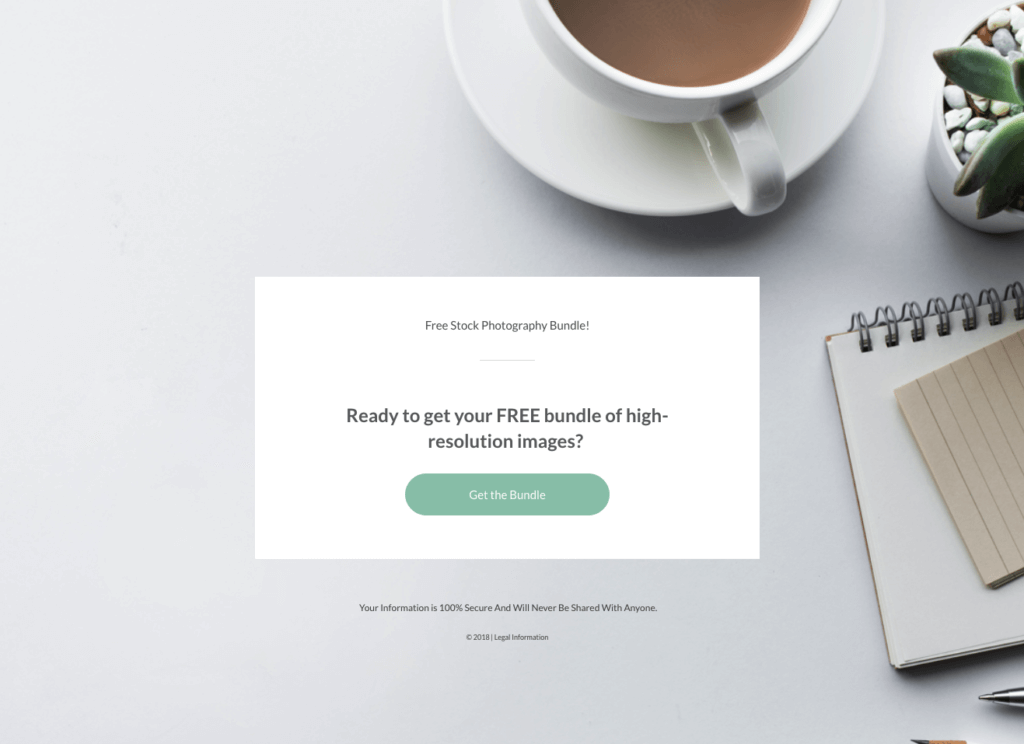
More recently we have been using landing pages linked to specific ad wording. A visitor will click on a link and will be taken to a landing page that is very specific to that ad.
The landing page will offer them something relevant, if they subscribe, and also have information that matches the ad description. This can work with Facebook, Google or Linked in ads. In certain markets Instagram, Snapchat or Pinterest can also be used to drive traffic to Landing Pages.
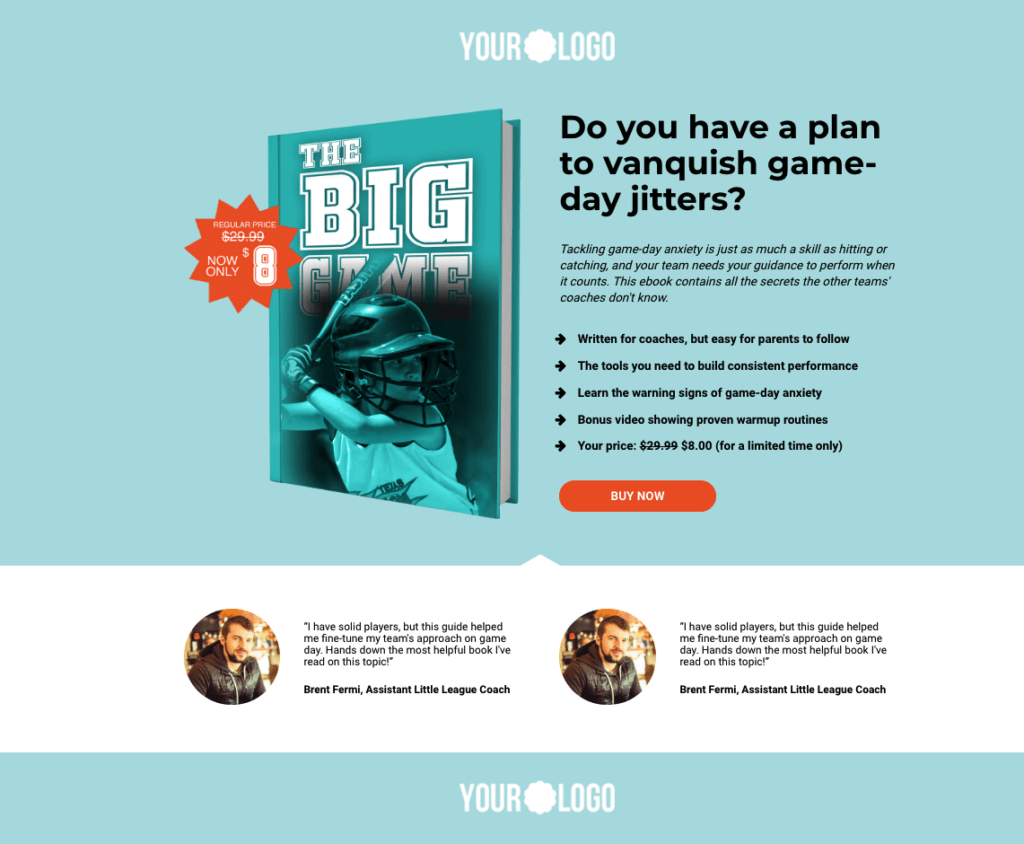
Most landing page software can also be used to create thank you pages, 404 pages for your website and checkout pages for taking orders. If you want to know more about how landing pages can be used, check out some of these articles.
Leadpages is my preferred Landing page software. I would also recommend Kartra if you are looking for a tool that does more than just landing pages. More on this later.
If you want to try Leadpages out, click here.
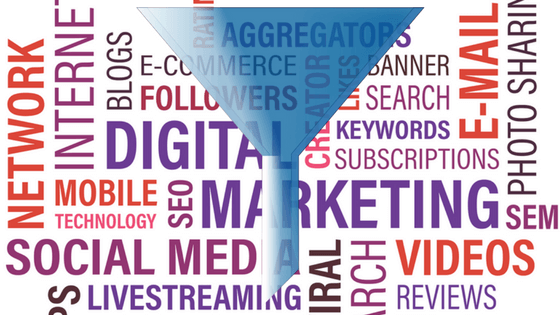
Sales and Marketing Funnels
In case you are wondering “what is a sales or marketing funnel?” It is an automated way to take someone who has found your business for the first time, maybe through a web search, a link from another site or a paid online ad (Google Adwords, Facebook Ads etc), and turn them into a lead, or maybe even a customer.
Sales and Marketing Funnels are the core part of many marketing automation systems, so it is important to understand how they work and what software tools help you make and manage them.
Here is an example of a sales funnel which I borrowed from James Wedmore:
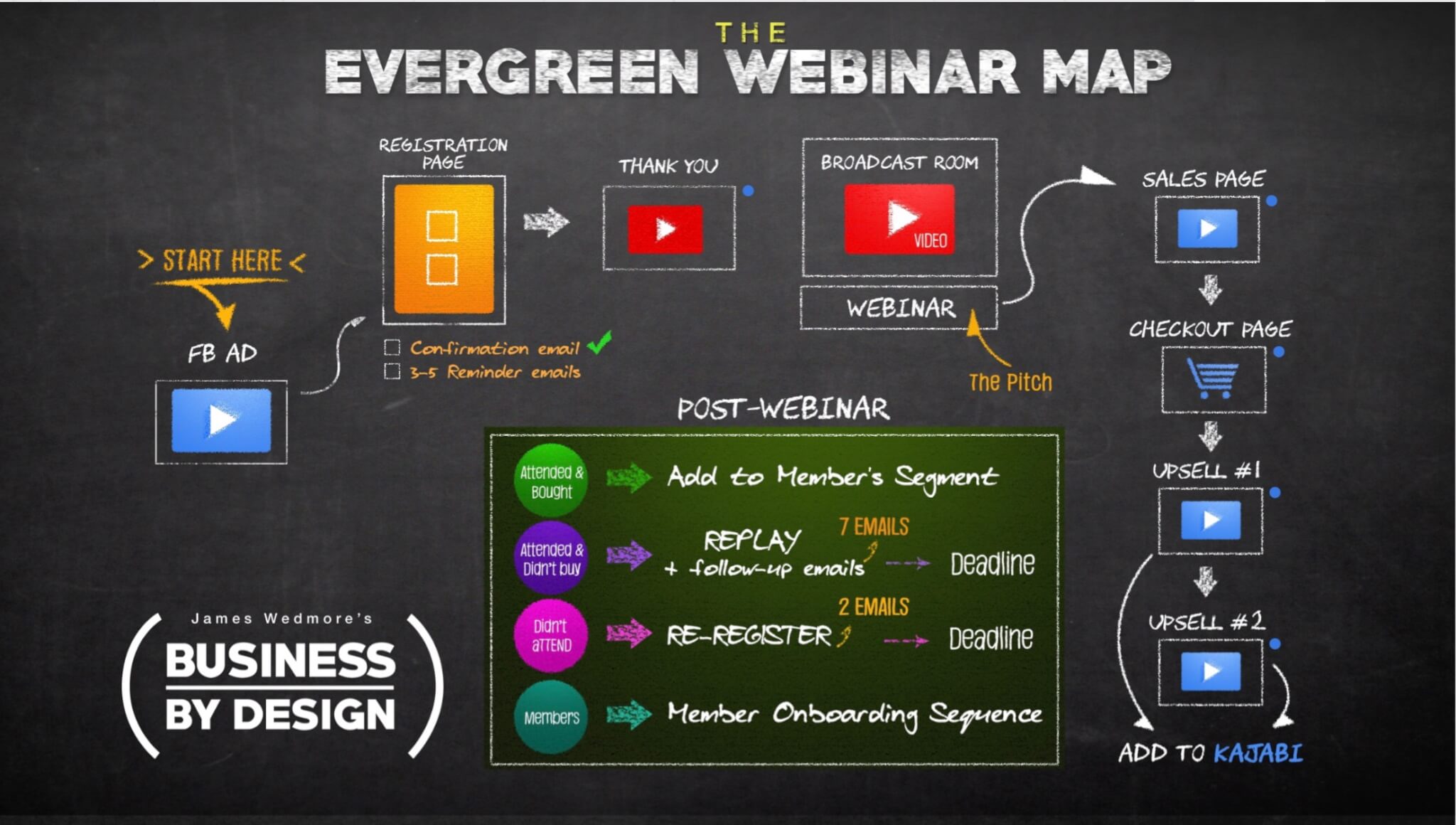
It takes a prospect from seeing a Facebook ad through to signing up for a Webinar. They are then sold a course or product on the webinar, but it doesn’t end there.
If they don’t purchase on the webinar, or maybe don’t even attend, they are sent a series of follow up emails to bring them back into the funnel.
Powerful stuff, but also quite daunting if this is a new concept to you. However, this is true marketing automation. It also gives a great example of the sort of marketing automation tools that your business may need.
How Marketing Automation Tools Are Used in a Marketing or Sales Funnel
This is an article in itself, but I will attempt to explain this using my example funnel from James Wedmore.
Step 1: Facebook Ad – This is usually created in Facebook’s Ad Manager, but if you are using Leadpages, they have a built-in tool to create Facebook Ads from a landing page you create in Leadpages. This can save a lot of time.
Building Facebook Ads Inside Leadpages
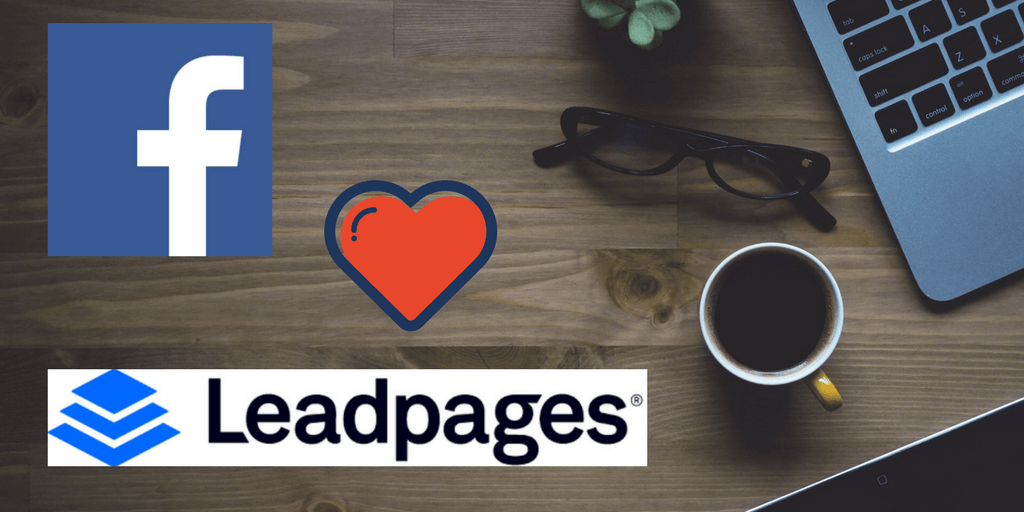
Step 2: Opt-in Page – This is a page created using your landing page software. Leadpages, Kartra, and Clickfunnels all have excellent templates for creating opt-in pages.
You use an Opt-in page to offer enough information or some kind of incentive that will get people to sign up for a Webinar or some kind of free offer. This free offer or leadmagnet could be a free cheat sheet, tip sheet, e-book or mini-course.
Step 3: Thank You Page – As I mentioned earlier, this is also created using your landing page software tool. Once your prospect has signed up for your offer or event, the Thank You Page confirms their sign up, thanks them and gives you the chance to ask further questions or maybe offer them something else.
A thank you page also provides a page you can track or tag if you want to create a custom audience to retarget.
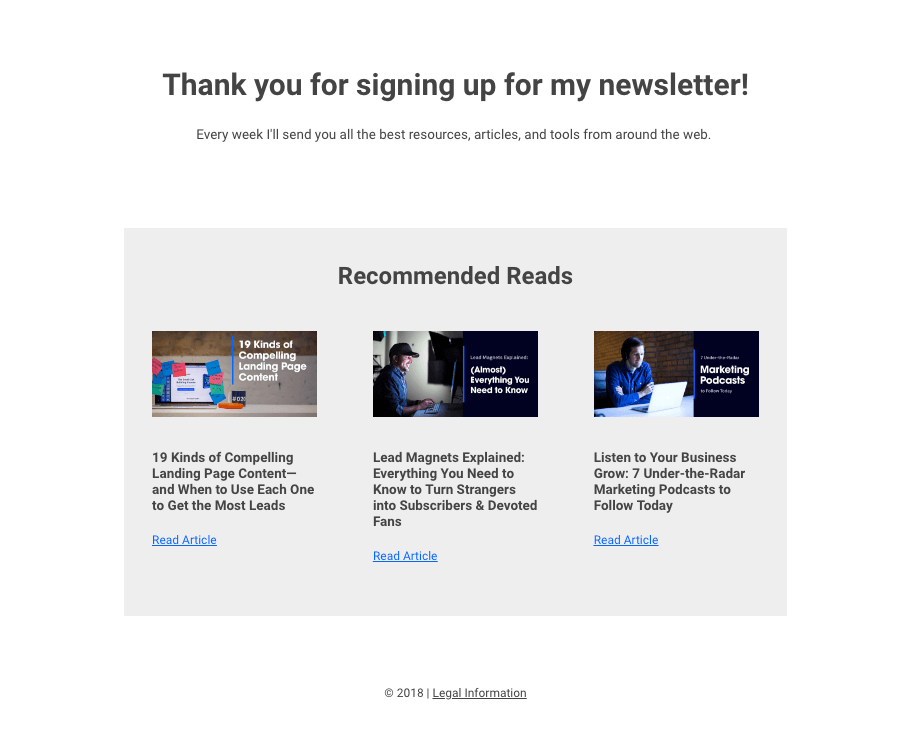
Step 4: The event or free offer – This is when things become variable and other software may be required. I will discuss this in more detail in the next section. However, if you are just giving away something in exchange for a persons email address, this can be managed by your landing page software.
Step 5: The email follow up sequence – This is where you switch to the second core marketing automation tool, your email automation tool. As I said before, I recommend Drip, but there are alternatives such as ConvertKit (which is designed for bloggers), Mailchimp and Active Campaign.
If you look at the green box in James’ funnel, this is all managed by the email automation tools. Visitors who signed up for James’s webinar are grouped into different segments or buckets and sent a series of emails that are appropriate to that segment.
Email segmentation is a whole separate topic, which I discuss in other articles and videos. Using an email automation tool like Drip allows you to send highly targeted email follow-up to your audience, providing value and encouraging them to reconsider making a purchase.
Optional Tools for Marketing and Sales Funnels
If you are specifically directing traffic to a webinar, you need a Webinar hosting tool. It is also possible to run a webinar live on Facebook or using a conferencing platform such as Zoom.
I recommend WebinarJam for running live webinars and its sister product, EverWebinar for running Evergreen Webinars.
Evergreen Sales Funnels – How Do They Work?

If your funnel directs people to sign up for a course or membership site, you will also need software to host this. James uses Kajabi. Other options are Kartra and Teachable.
Finally, if you are selling online, you need some form of Shopping Cart and Payment Software. Shopify is probably the best if you are in the eCommerce space. SamCart is used widely in the online course space. I recommend Stripe for payment processing. Paypal is also an option.
All-in-one Marketing Automation Tools
Earlier I mentioned Kartra and Clickfunnels. Both these software tools offer “built for you” sales funnels. Russell Brunson (Clickfunnels) and Frank Kern (Kartra) are two of the most successful online marketers in the business and they have used their experience to put together pre-optimized sales funnels that you can use in your marketing and sales campaigns.
These are included in Kartra and Clickfunnels. This may be important to you.
Kartra has gone a step further. Kartra includes landing page software, A Form Builder, Email Automation Tool, Membership or Course Hosting Platform, Helpdesk, Affiliate Management Portal and a pretty good eCommerce Platform. All this is in one product.
If you think you are going to need more than two of these tools, I suggest you look at Kartra. All to modules have the same look and feel and there are considerable savings to be made over subscribing to individual products.
Click here to read my full Kartra review and check out my video tutorials.
Summary
Confused?
Hopefully not, but it can be a lot to take in. However, this article is talking about marketing automation tools and more specifically what tools you should invest in if you are a small business, or solopreneur, with a small marketing team. This is something I want you to focus on.
Primarily, you are looking for marketing automation tools that are easy to use but also powerful. These tools primarily need to allow you to convert web, ad or email traffic into leads, prospects and ultimately customers.
For this, I would recommend you invest in a good landing page tool and an email automation tool that will allow you to segment your leads and prospects and send them email campaigns automatically.
Drip is my choice of email automation tool for a small business with a sales team or an eCommerce business. If you are a blogger working only in email, ConvertKit may be better suited to you.
If you are setting up an eCommerce or Membership site or maybe want to set up an Affiliate or Partner Program to sell your products, I recommend you look at Kartra. You only need to learn one tool and you could save yourself a lot of money in the long term.
High-End Marketing Automation Platforms
One final footnote. You may have heard of tools such as Hubspot Marketing, Marketo, Eloqua, and Infusionsoft. These are integrated marketing platforms that are designed to fully automate your marketing process.
They are the ultimate in marketing automation tools, but they are also inherently complex and expensive. They are typically used by companies with large marketing teams who invest heavily in their marketing activities.
Set up correctly they can alert your salespeople when a prospect opens an email, visits a web page or downloads a document. They allow you to create web content and email campaigns all in one place. They can manage customer service and the order process.
If this is what you want to achieve, these are the right tools. However, you need deep pockets to purchase them, and implement them. You also need to have people in your team who are trained and have the time to manage them. I know this from personal experience.

